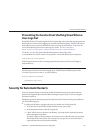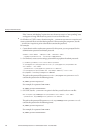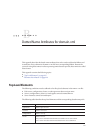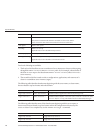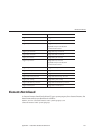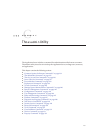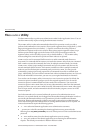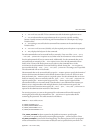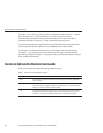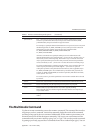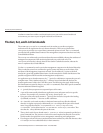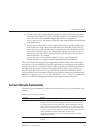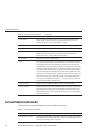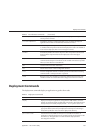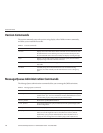
■
-s --secure if true, uses SSL/TLS to communicate with the domain application server.
■
-t --terse indicates that any output data must be very concise, typically avoiding
human-friendly sentences and favoring well-formatted data for consumption by a script.
Default is false.
■
-e --echo setting to true will echo the command line statement on the standard output.
Default is false.
■
-I --interactive if set to true (default), only the required password options are prompted.
■
-h --help displays the help text for the command.
For subcommands that can be executed locally or remotely, if any one of the--host, --port,
--user, and --passwordfile options are set, either in the environment or in the command
line, the subcommand will run in remote mode. Additionally, for subcommands that can be
executed locally or remotely, if the --local option is set to true, the subcommand will run
locally. Also, if none of the local options are set, either on the command line or in the
environment, the subcommand is executed locally by default. Setting the --local option to
true overrides the local --host , --port, --user, and --passwordfile settings, even if specied.
The subcommand will run in local mode.
Subcommands that can be executed locally accept the --domain option to specify the domain of
interest which assumes the domain as the default domain if there is only one. If there is more
than one domain, the --domain option is a required option. For subcommands that can be run
locally or remotely, when run remotely with the--host, --port, --user, and --passwordfile
options specied, the --domain option is ignored. The --domain option is ignored if the
subcommand will be run in remote mode. Note that there is one administration instance per
domain, so on a single machine with multiple domains, local execution must specify the
domain, and remote execution must specify the --host, --port, --user, and --passwordfile
options for the administration instance for that domain.
For security purposes, you can set the password for a subcommand from a le instead of
entering the password at the command line. The --passwordfile option takes the le
containing the passwords. The valid contents for the le are:
EXAMPLEC–1 Passwordlecontents
AS_ADMIN_PASSWORD=value
AS_ADMIN_ADMINPASSWORD=value
AS_ADMIN_USERPASSWORD=value
AS_ADMIN_MASTERPASSWORD=value
If AS_ADMIN_PASSWORD has been exported to the global environment, specifying the
--passwordfile option will produce a warning about using the --password option. Unset
AS_ADMIN_PASSWORD to prevent this from happening. The master password is not propagated
on the command line or an environment variable, but can be specied in the passwordfile.
The asadminUtility
AppendixC • Theasadmin Utility 233



